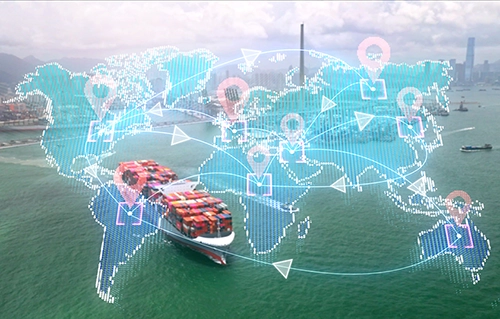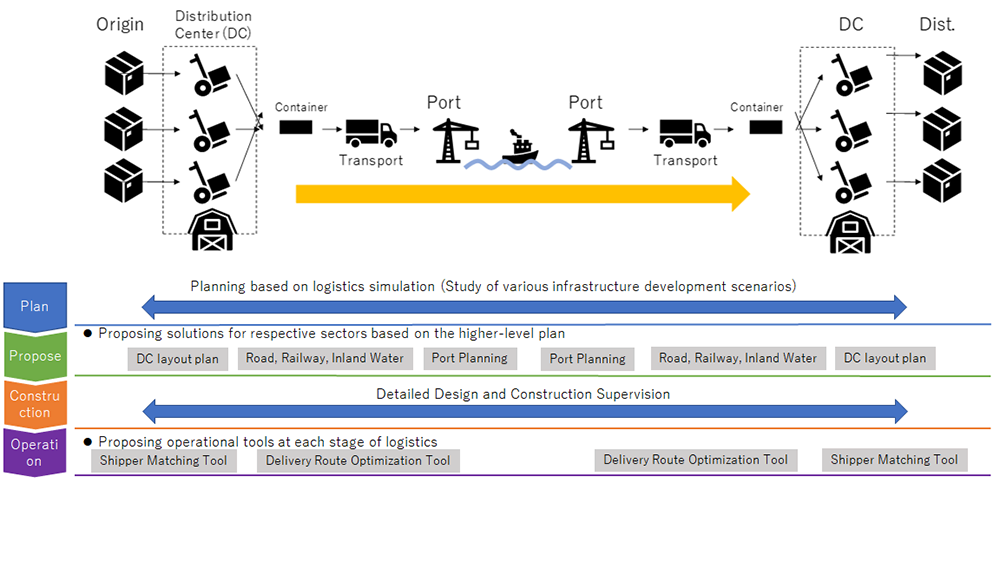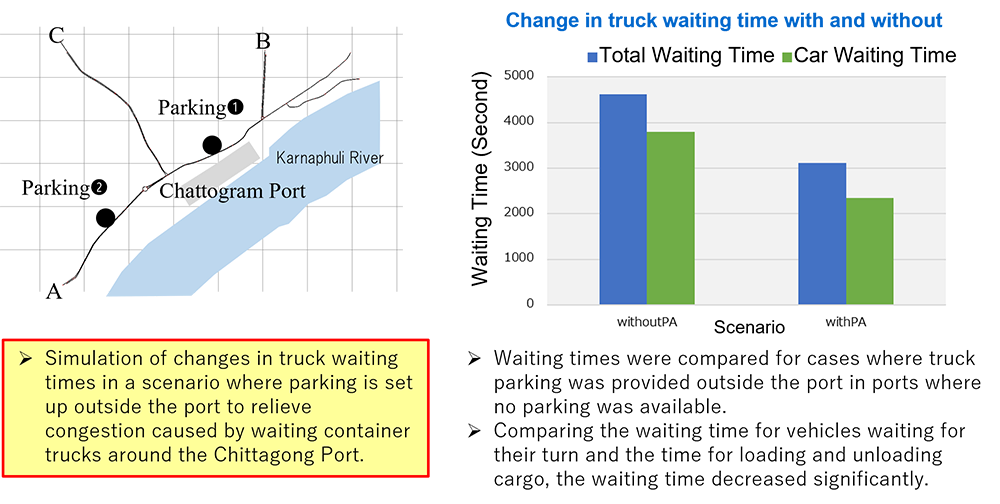Infrastructure Development Planning Method for Logistics Hubs Taking into Account the Logistics Network Economic loss reduction through wide-area logistics planning
Release:
Update:
NEW

NEEDS
Improving logistics efficiency
Developing countries are experiencing rapid economic growth, but few of them can fully develop their true potential. One reason for this is inefficient logistics. Narrow ports, heavy traffic congestion, and inefficient transportation methods are just a few of the issues that need to be addressed.
International ports are key logistics hubs for both imports, exports, and domestic transportation. Therefore, many governments tend to build new ports in adjacent areas to complement existing ports. Even so, cargo shifting has failed in many cases.
When building new ports, it is necessary to optimize congestion countermeasures and inland transportation to accommodate increasing and changing logistics volumes. Comprehensive and future-oriented logistics planning, including the use of hinterland, can greatly reduce losses.
Nippon Koei Co., Ltd. has established the Logistics Planning and Management Office, which brings together experts in the fields of ports, transportation, and railroads. From a broad, comprehensive perspective, the office develops plans to realize the inherent growth potential of the country or region.
SOLUTION
Plan, propose, construct, and operate all aspects of optimizing logistics efficiency

When constructing a new port, there are a wide variety of areas to simulate. Looking at port functions alone, it is essential to optimize container storage capacity and transportation lines. However, even if only the port is highly functional, losses cannot be eliminated.
In logistics between ports and destinations, trucks are commonly used, but traffic congestion is the most common cause of logistics losses. We optimize road transportation from a comprehensive perspective, including the development of effective traffic plans as well as the provision of parking lots for trucks to temporarily leave the area.
Effective use of rail and inland water transportation is also an important issue to be considered; detailed simulation of the volume and frequency of transportation per trip will enable flexible logistics in response to increasing cargo volumes.
The simulation of these means of inland transportation reveals the potential of the hinterland. Based on the time value of cargo and geographic information, a detailed understanding of the hinterland extension for each port will further strengthen the linkage with inland cities.
Thus, a comprehensive logistics plan that takes into account all of the various factors that are intricately related to each other is required for port-based logistics planning. Nippon Koei has been involved in the entire process from pre-planning simulation to actual planning, proposal, construction, and operation. We provide consulting services to restore the original growth potential of a country or town, starting with a plan that is tailored to the actual conditions of that country or town.
POINT
Improving logistics efficiency directly leads to solving environmental issues
As an example, here is a simulation of a port project in Bangladesh, where Nippon Koei is also deeply involved in other projects.
The port of Chittagong in southeastern Bangladesh is the most important international port in the country. It currently handles more than 90% of international cargo. Hence, container handling volume exceeds port capacity, and roads are chronically congested, especially in the morning and evening. The port of Matarbari is currently under construction as a complementary port to the port of Chittagong. Cargo is being shifted to the port of Matarbari, and simulations are being conducted on the development of logistics infrastructure to improve the efficiency of logistics in Bangladesh. Although truck-based land transportation accounts for the majority of cargo transport in the region, since both railroads and inland water transportation are available, we are simulating several patterns of how efficiency can be improved by changing the size and frequency of railroads and inland water transportation, in addition to the development of logistics infrastructure such as the extension of railroads.

In the case of the Chittagong Port, when cargo ships arrive, trailers gather at once, causing traffic congestion, so additional trailer waiting areas and conduits in the port were planned. The project has improved the efficiency of civilian traffic and trailer traffic. For this study, we developed software that simulates each vehicle on a vehicle-by-vehicle basis.
Logistics with less loss is a key feature of this project, which is also earth-friendly. In other words, the ability to reduce emissions of exhaust gases and carbon dioxide in developing countries is not only an economic benefit, but also a solution to social issues.
We, Nippon Koei Co., Ltd., offer our accumulated technologies in the field of logistics consulting to our customers and the earth.




